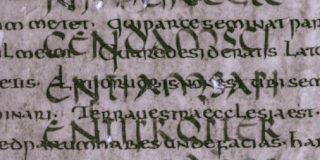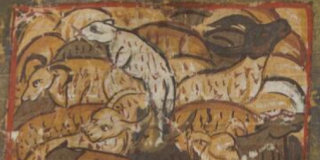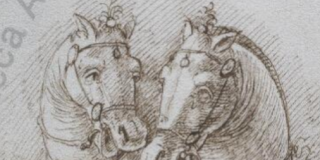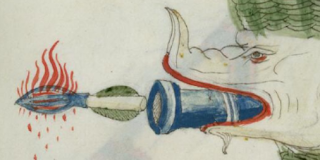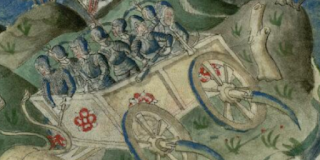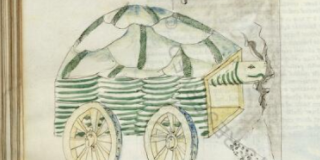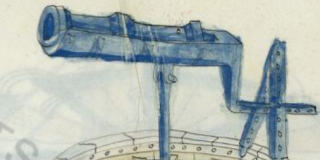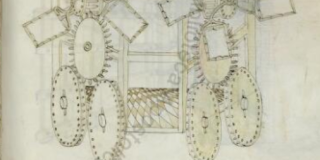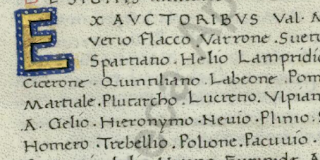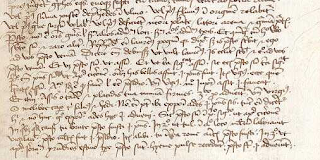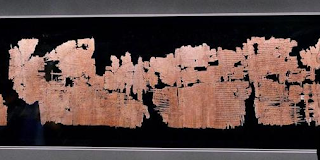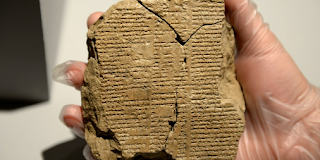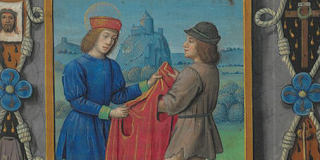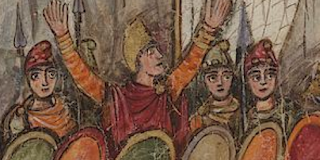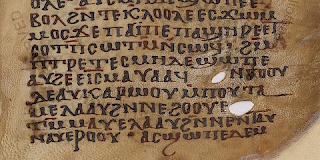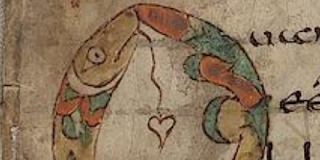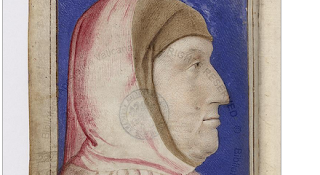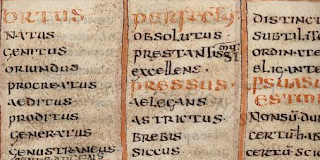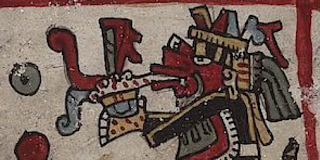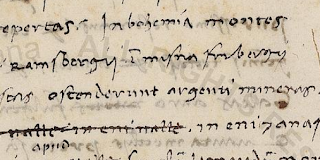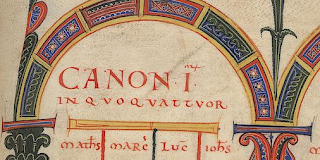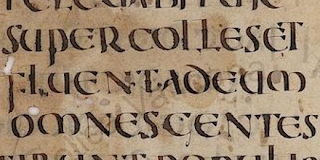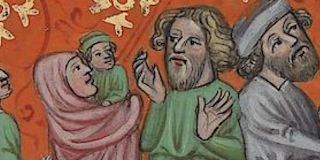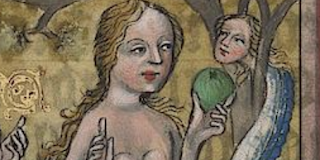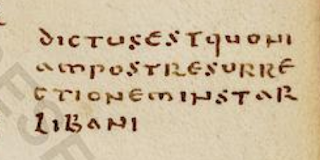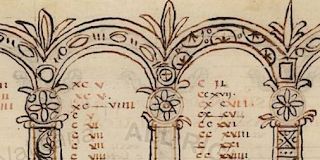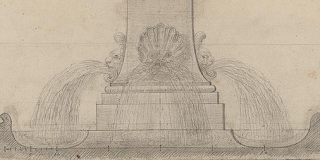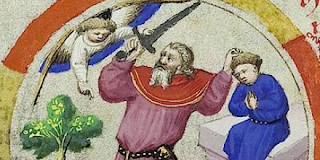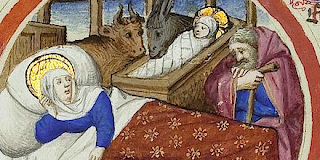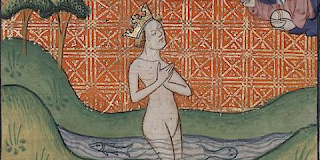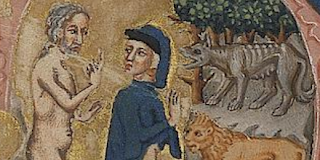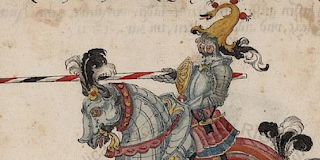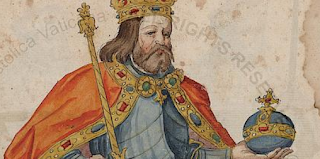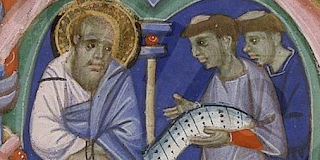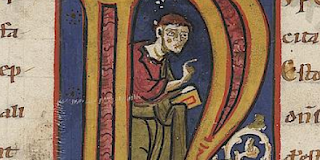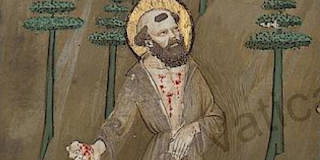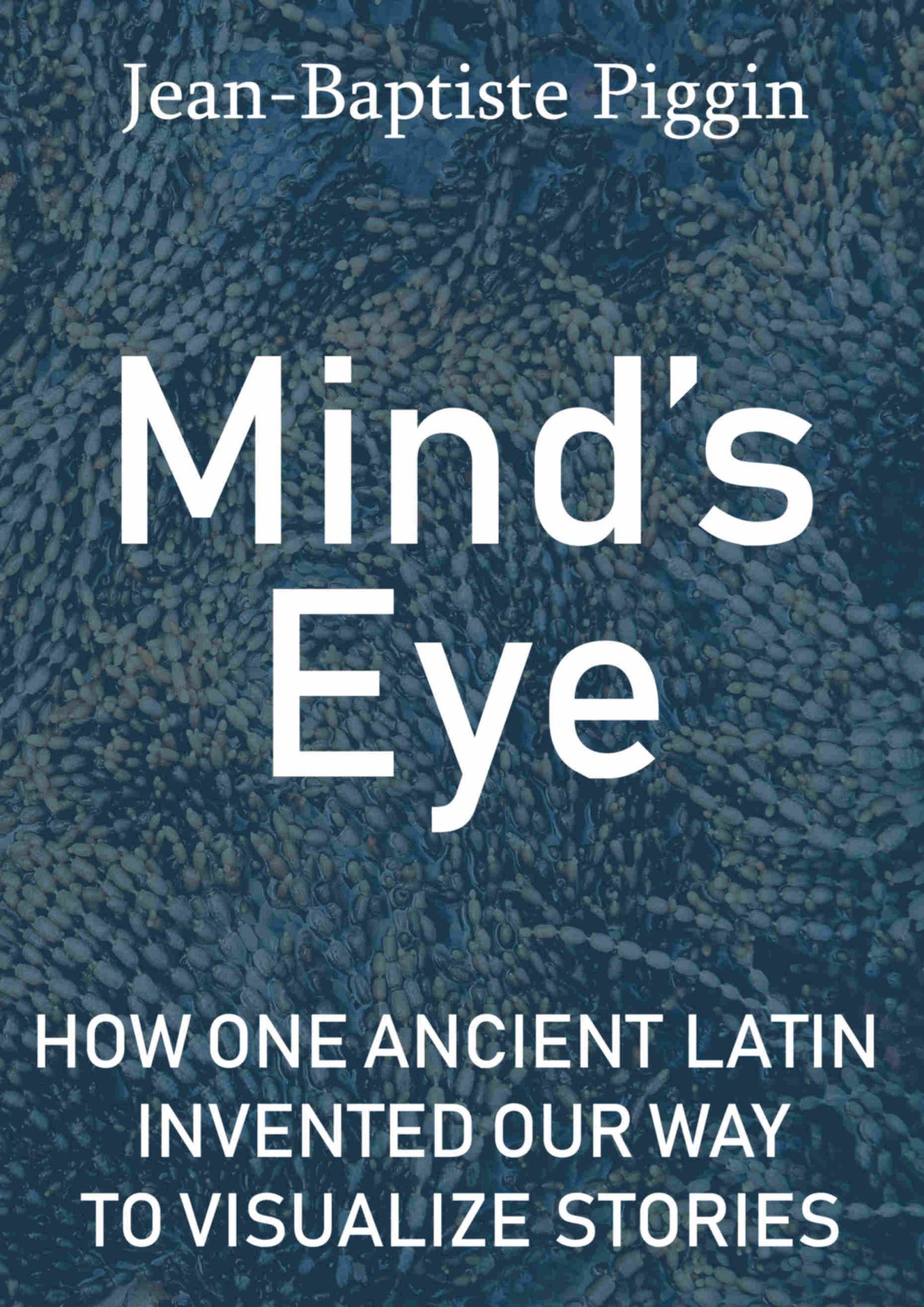Palimpsests, of which Rome has a good number, mostly contain familiar texts which we hardly need to read yet again. Angelo Mai's discovery in 1819 that Vat.lat.5757, a 7th-century copy of Augustine's On the Psalms, was written over a lost book, a 4/5th-century uncial text of De republica, was immensely more thrilling.
The 151 leaves contain roughly a quarter of Cicero's dialogue, enabling us to at least read it in summary form. There are quotes from De republica in other works, but had it not been for this book recycling by the poor monks of Bobbio in northern Italy, the Cicero work would have stayed lost forever.
The digitization of the Cicero Palimpsest is very painstaking, with alternate natural-light and ultraviolet exposures to show up the undertext, and careful analysis of the bifolium and quire orders. The big text in this violet view is the Cicero:
Mai's discovery triggered 200 centuries of hunting for more palimpsests. Among the finds, the Archimedes Codex discovered by Heiberg has perhaps been the second greatest prize.
Check Jeremy Norman's brief account, or the Wikipedia article on De republica, or James Zetzel's very readable introduction via Google Books. The Cicero Palimpsest's digitization, completed on November 11, might perhaps be experienced as a reminder to all to keep faith with our political institutions after a week when Donald Trump won the US presidential election.
Naturally the codex is also of enormous interest to palaeolography, since it is an ultra-rare example of late fourth or early fifth-century uncial (CLA 1 35, Trismegistos 66130) and at the same time a quite rare example of seventh-century script (CLA 1 34, Trimegistos 66149). [Late add: see CLA too on the new Galway Database.]
Here is the full list of November 11 releases, which bring the posted total to exactly 6,100.
- Urb.lat.365
- Vat.gr.303.pt.3
- Vat.gr.751, Book of Job and commentary with catenae, Apollinaris of Laodicea, variously dated 13th or 14th century, or earlier according to a Wikipedia list. With many beautiful miniatures throughout, some unfinished blanks. Leaf through and admire items such as this image of Job's early wealth:
- Vat.lat.230, Praeparatio evangelica of Eusebius of Caeasarea, translated to Latin by George of Trebizond, HT to @LatinAristotle who notes this is one of 51 extant manuscripts of the translation.
- Vat.lat.484
- Vat.lat.533
- Vat.lat.939
- Vat.lat.957
- Vat.lat.990
- Vat.lat.992
- Vat.lat.1009
- Vat.lat.1011
- Vat.lat.1022
- Vat.lat.1023
- Vat.lat.1025
- Vat.lat.1026
- Vat.lat.1027
- Vat.lat.1035
- Vat.lat.1059
- Vat.lat.1073
- Vat.lat.1124
- Vat.lat.1126
- Vat.lat.1142
- Vat.lat.1903, Life of Hadrian
- Vat.lat.3173, Horace
- Vat.lat.3210, Pietro Bembo autograph
- Vat.lat.3255, Georgics, heavily annotated
- Vat.lat.3302, a manuscript belonging to Fabio Mazzatosta, a very wealthy student at Rome in the 15th century who died before getting his first job. This has the Punica of Silius Italicus. At 12,000 lines this is claimed to be the longest preserved poem in Latin literature. Here, just books 1-9, 12-17. With fine illumination, plus end-paper drawings like these horses: This seems to be by the German artist Joachim de Gigantibus. The BAV owns five of the seven Fabio Mattatosta Codices, all commissioned by M from his pal Pomponio Leto. The others are Vat.lat.3264 (Fasti of Ovid), 3279 Thebaid Statius, 3285 (Pharsalia of Lucan) and 3875 (Silvae and Achilleis). One more is at the British Library. Source: Diz. Biografico.
- Vat.lat.5757 (above)
